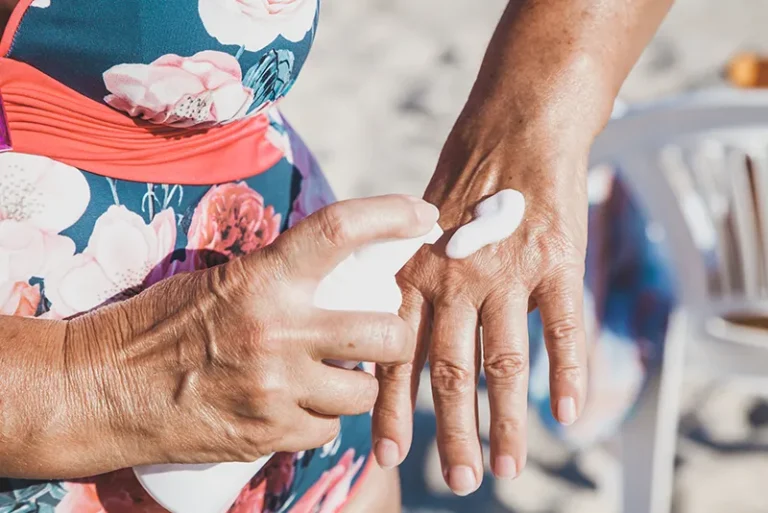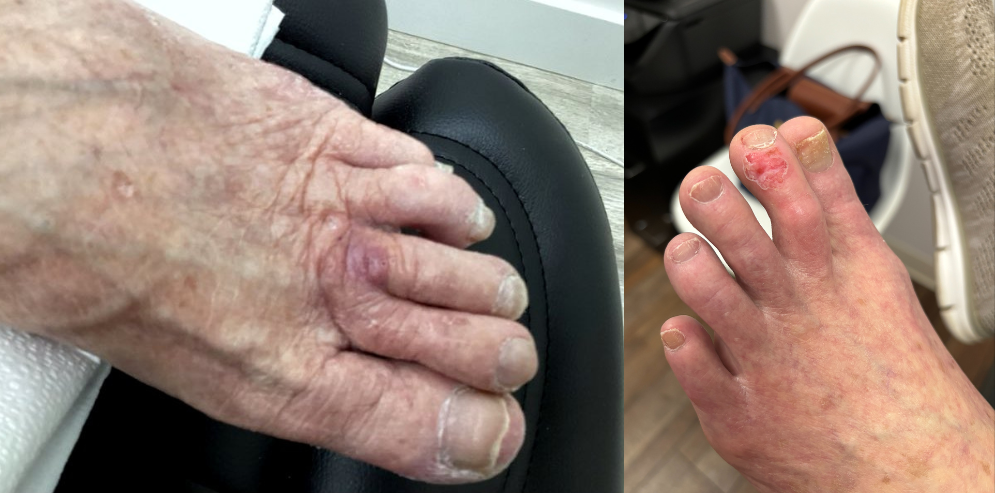
Basal cell skin cancer is one of the most common types of skin cancer, though within this category there are several subtypes that are more rare. One of these is cystic basal cell skin cancer, a form so rare that it is often misdiagnosed. Read on to learn more about this basal cell skin cancer cystic type and explore your options for cystic basal cell skin cancer treatment.
Basal Cell Skin Cancer Cystic Type
For most patients receiving a skin cancer diagnosis, it’s more than likely that they have basal cell skin cancer. This form of common skin cancer accounts for nearly 70% of all cases, and can present with a wide variety of physical symptoms, including lesions in a range of colors and sizes that can bleed, puss, or scab over without healing.
Conversely, the basal cell skin cancer cystic type is extremely rare, contributing to only 2.9% of diagnoses. Unlike with most basal cell lesions which are typically red, pink, white, or skin-tone colored, cystic basal cell skin cancer can present as a bluish-black spot that is slightly raised. Because this veers off the common visual markers of the disease, it can often be difficult to properly diagnose.
Most skin cancers are very slow growing, nodular cystic basal cell skin cancer included. While it may initially appear like a common mole, over time it can grow and change in color, which is a clear warning sign that merits medical attention. Anytime you notice changes to your skin it’s important to schedule a skin screening to assess whether or not the changes are concerning.
Cystic Basal Cell Skin Cancer Treatment
Those seeking cystic basal cell skin cancer treatment are likely to be provided with a variety of options that will depend on the stage and severity of the skin cancer. Understanding the available options can help you make an informed decision on your treatment and recovery. The most common treatment methods include:
- Mohs surgery: this approach physically cuts the cancer out of the skin to remove the diseased cells. While Mohs is very effective, it often leaves patients with scarring.
- Chemotherapy: this approach uses an intravenous drug to flood the patient’s system and obliterate cancer cells. This method is also effective though it usually comes with challenging side effects.
- Radiation: this approach harnesses radiation energy to essentially pulverize a cancerous cell before it spreads. Image-Guided Superficial Radiotherapy (Image-Guided SRT) is just as effective as Mohs without the surgery or surgical scarring.
Talk with your physician to determine which cystic basal cell skin cancer treatment is best for your symptoms.
Learn How to Stand Up Against Cystic Basal Cell Skin Cancer
Cystic basal cell skin cancer patients have options. To learn more about Image-Guided SRT and explore whether or not it’s right for you, call our skin cancer information specialists at 855-936-4411. We’re here to answer your questions and guide you towards helpful solutions.








